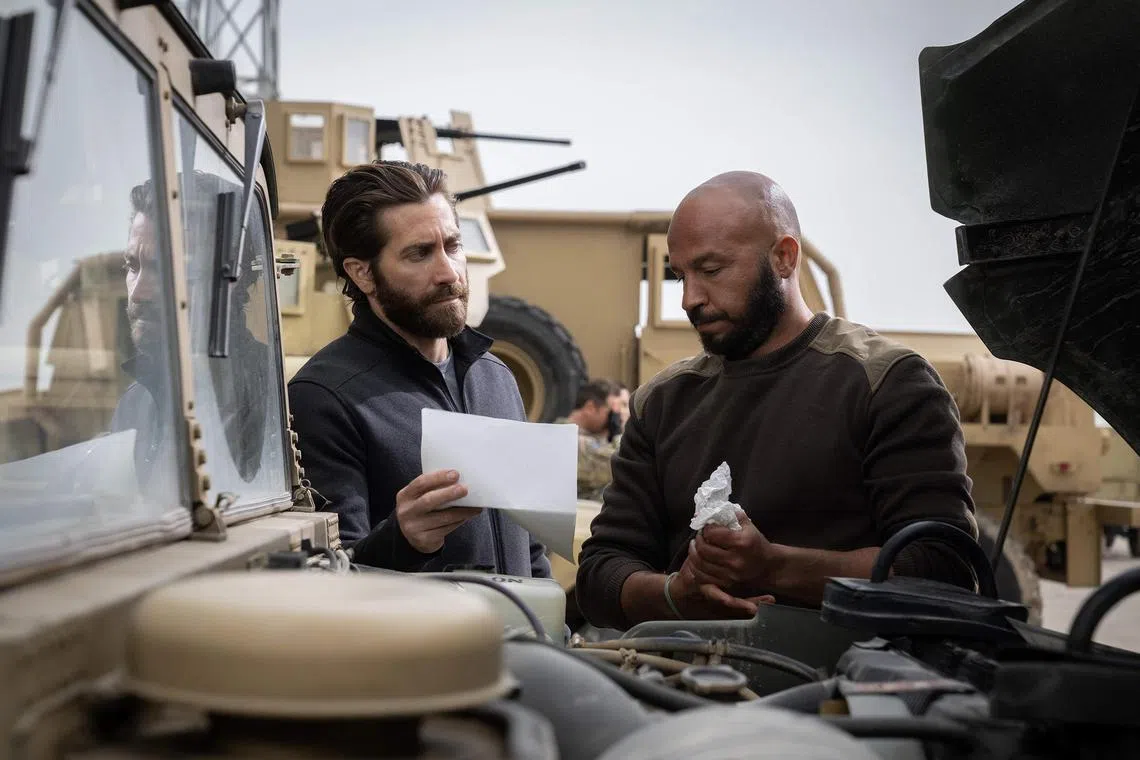At The Movies: War drama The Covenant mixes action with a moral message, and it works
Sign up now: Get ST's newsletters delivered to your inbox

A still from The Covenant starring Jake Gyllenhaal (left) and Dar Salim.
PHOTO: METRO-GOLDWYN-MAYER PICTURES
Follow topic:
Guy Ritchie’s The Covenant (NC16)
123 minutes, opens on Thursday
3 stars
The story: Army sergeant John Kinley (Jake Gyllenhaal)
Guy Ritchie is not just a film-maker, he is now also a brand – as the use of his name in the title of the film suggests.
Perhaps it has been done to assure viewers that despite the absence of his trademark London gangster characters, this movie comes from an A-list action-movie director, and is not low-budget junk or a talky drama.
Whatever the reason for the branding, The Covenant features the English writer-director at his un-Ritchie-est: No rapid-fire edits, no extended scenes of men bantering, no shootouts set to a thumping pop soundtrack.
This is a serious, straightforward military action piece, one that puts a focus not on one grand objective or final mission, but on the idea of moral debt between two men in a war zone.
The story also promotes the idea that if the West has played a role in the war, it cannot simply pull out and wash its hands of the consequences. The section of the population that was on their side during the war is owed some form of aid.
Ritchie keeps the tone grim – the two men do not chat about wives and kids over tea, nor are there scenes of happy families. Instead, the setting is almost always in the field, in combat, where the men communicate tersely.
There is a surprisingly large amount of gunplay here. One suspects that, given Ritchie’s improvisational approach to storytelling, extra combat scenes have been tacked on to spice up the proceedings.
The gun battles feature realistic military manoeuvres and easily followed camera movements – this is Ritchie at his most sedate and naturalistic, which makes sense in the context of this story.
Hot take: Take the idea of a one-man army found in the Rambo movies (1982 to 2019) and the notion of Western moral debt found in The Killing Fields (1984), and you have this slick action flick with a moral message.


